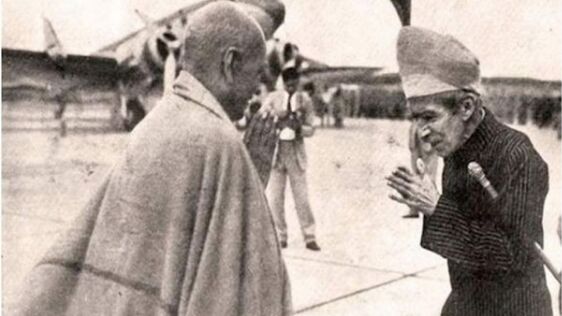A meek surrender
Eventually, the possibility of accession to Pakistan was ruled out, and what rolled out was an ineffective Standstill Agreement that paved the way for decisive military intervention

In the first part, we discussed that the Nizam's persistent efforts to accede to Pakistan were not reciprocated well due to certain reasons. The present part lays down a chronology of events that ultimately led to Hyderabad's accession to the Dominion of India. Just before the Independence, the Political Department of the Raj had prepared the draft of the Standstill Agreement which provided that all extant administrative arrangements of common concern that existed between the 'Crown' and the signatory state (Hyderabad) would continue unaltered with the signatory Dominion (India or Pakistan) until new arrangements were made. From a juristic point of view, it was different from the Instrument of Accession prepared by the States Department (under Patel and Nehru) because the IoA involved the surrender of sovereignty in the three specified subjects of defence, external affairs and communication. Hyderabad was unique in the sense that it wanted a special standstill agreement, and that too without signing the Instrument of Accession.
This was also a period of intense political rivalry and struggle within the ruling clique in Hyderabad state. The Ittehad-ul Muslimeen and Kasim Rizvi became Nizam's key advisors, and they eased out the Constitutional Advisor, Sir Walter Monckton as well as the Nawab of Chhatri from the Nizam's Executive Council. The position was filled by a prominent Hyderabadi businessman Liak Ali.
By November, the Nizam had confirmed to Mountbatten that he will not accede to Pakistan, an exception was made in the case, and India agreed to sign the Standstill Agreement for a period of one year without the Instrument of Accession. However, even before the ink was dry on the Standstill Agreement, two ordinances issued by the Nizam's government – the first declaring that Indian currency would no longer be a legal tender in Hyderabad, and the second imposing a ban on exports of precious metals from Hyderabad to India – went against the letter and spirit of the Standstill Agreement. Hyderabad also offered a loan of Rs 20 crores to Pakistan in the form of Government of India securities, and appointed a PRO in Pakistan besides declaring its intent to extend such appointments in other countries as well. From the provocative speeches of Kasim Rizvi, and the activities of razakars, only two conclusions could be drawn — either the Nizam was unable to enforce his control over them, or he was unwilling to assert his authority. In both cases, it left the overwhelming majority of his subjects (including Muslims who disagreed with Ittehad-ul Muslimeen) absolutely terrified. While the Nizam always committed that he would disband the razakars, as a matter of fact, they tied up with the Communist insurgents to carry out their loot and plunder.
Even though Mountbatten tried his best to ensure an honourable settlement between Hyderabad and the States Department, his efforts came to a naught. Before his departure from India in June 1948, he sent his trusted aide and Press Attaché, Alan Campbell Johnson to meet the Nizam and study the situation to report back to him. After meeting the Nizam and the key players in his establishment — Liak Ali, Kasim Rizvi and El Aldroos (the army commander) — he concluded that "the Nizam was the key man in the situation, and that with regard to the main issue of relations with the Indian Union, nothing was being done without his approval. He further reported that the Nizam was in a mood of 'aggressive fatalism".
After Mountbatten's departure, attitudes stiffened on both sides, and the margin for the 'faithful ally of the British' was no longer available to Hyderabad. Meanwhile, reports of the gun-running by one Sidney Cotton from the airfield in Karachi, the resignation of the Hindu members of the Nizam's council, their insistence on taking up the matter of Hyderabad to the UN and the USA, led Governor-General Rajagopalachari, Prime Minister Nehru and Deputy Prime Minister Sardar Patel to the firm decision that time had come for military intervention.
The 108-hour military operation led by General JN Chaudhari, codenamed 'Operation Polo' commenced on September 15, 1948, and ended in the morning of September 18, with El Aldroos laying his arms. Although there was a general clamour for deposing the Nizam, he had changed his stripes after the meek surrender of his Army Commander El Aldroos. The Nizam issued a Firman on September 19, "investing full executive authority with the power to issue regulations having the force of law". This was reiterated by another Firman on August 9,1949, which enabled the merger of jagirs with states and finally, on December 1, through the third Firman, the administration was transferred to the Chief Minister of Hyderabad, the first incumbent being MC Vellodi. Four members of the Hyderabad Congress joined his council. At the commencement of the Constitution, Hyderabad was integrated into India as a Part-B state, with the Nizam of Hyderabad as the first rajpramukh.
Views expressed are personal



